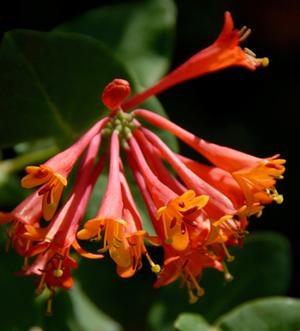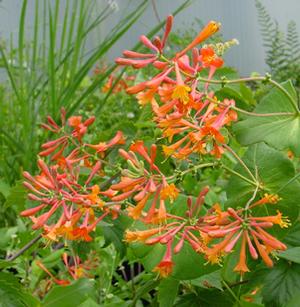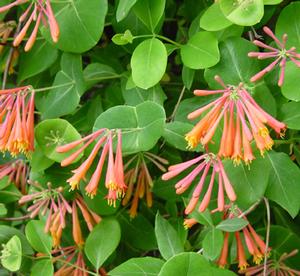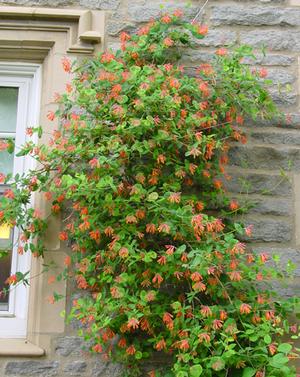Lonicera sempervirens 'Magnifica'
Common: trumpet honeysuckleLonicera sempervirens 'Magnifica' - 50 per flat
- Height: 4'-7'
- Spread: 1'-6'
- Spacing: 24"-36"
- Hardiness Zone(s): 4-9


Lonicera sempervirens 'Magnifica' - 50 per flat



The sweetly-scented tubular orange flowers of this native honeysuckle often attract hummingbirds to the garden throughout the summer. Flowers are followed by bright red fruit, attractive to birds. A twining vine, it needs a trellis or fence for support.
Lonicera sempervirens 'Magnifica' prefers average, well-drained soils in full sun to part shade. More sun will give you more flowers. Tolerant of drought and dry soils once established, but either may reduce flower production and growth. Blooms on previous year's growth and new growth, so you can trim it back or leave it be. Prune to best suit your site. Lonicera sempervirens is a twining vine and needs small to medium width support to climb. Ideal on a trellis or open fence. Can climb a wood fence with help getting started.
Lonicera sempervirens can be found on fence rows, roadsides, open woodlands and the edges of clearings, from Connecticut to Nebraska, and south to Texas and Florida. North American Distribution Map
This cultivar came to North Creek via our friend Charles Cresson, who got it from Edgewood Garden Center, Edgewood, Colorado when there with PPA in 1996.